Next Council Meeting
 The Official Web Site of the State of South Carolina
The Official Web Site of the State of South Carolina
Lexington County Administrative offices will be closed on December 24th, 25th, and 26th in observance of the Christmas holiday.
Lexington County administrative offices are open Monday through Friday 8 AM to 5 PM
T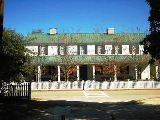 his beautiful structure, the first building to be listed on the National Register of Historic Places in Lexington County, features exhibits inside that show how the house would have been set up around the middle of the nineteenth century. Nineteenth-century furniture, textiles, and other artifacts made in Lexington County are displayed in the house. The home clearly illustrates the patterns of life in a prosperous, local farming family. Architecturally, the house is an I-house, and is typical of Lexington County buildings of the period.
his beautiful structure, the first building to be listed on the National Register of Historic Places in Lexington County, features exhibits inside that show how the house would have been set up around the middle of the nineteenth century. Nineteenth-century furniture, textiles, and other artifacts made in Lexington County are displayed in the house. The home clearly illustrates the patterns of life in a prosperous, local farming family. Architecturally, the house is an I-house, and is typical of Lexington County buildings of the period.
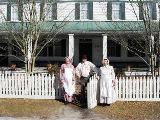 Built around 1832, the Fox House may have been constructed by Jesse Bates, its first owner. John Fox, a prominent politician who served as justice of the peace, sheriff, state representative, state senator, and various other government offices bought the house in 1843. He used it as a town residence, as he already owned a plantation three miles from Lexington Court House. Census records indicated that several students from the Lutheran Theological Seminary, which was located in Lexington Court House from 1832 to 1855, boarded with the Fox family. The Fox House was home to the Fox family and their descendants for more than a century, until the Lexington County Museum acquired the building and restored it in 1969.
Built around 1832, the Fox House may have been constructed by Jesse Bates, its first owner. John Fox, a prominent politician who served as justice of the peace, sheriff, state representative, state senator, and various other government offices bought the house in 1843. He used it as a town residence, as he already owned a plantation three miles from Lexington Court House. Census records indicated that several students from the Lutheran Theological Seminary, which was located in Lexington Court House from 1832 to 1855, boarded with the Fox family. The Fox House was home to the Fox family and their descendants for more than a century, until the Lexington County Museum acquired the building and restored it in 1969.
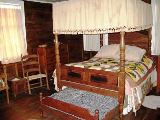 The house currently has six bedrooms although it originally had more
The house currently has six bedrooms although it originally had more
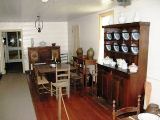 The dining room appears just as it would have in the 1840s or 1850s. It features a pine lazy susan table that would have been used by the adults in the family. The children ate at a different table after the adults had finished eating.
The dining room appears just as it would have in the 1840s or 1850s. It features a pine lazy susan table that would have been used by the adults in the family. The children ate at a different table after the adults had finished eating.
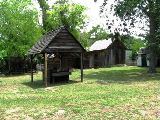 The yard of the Fox House has a work area and contains many of the structures that would have been associated with the house including the smoke house, the oven, the chicken coop, and privy. Although these structures are not original to the site, many were owned by the brother-in-law of John Fox, Joel Ridgell, and were typical of plantations throughout the South in the mid-nineteenth century.
The yard of the Fox House has a work area and contains many of the structures that would have been associated with the house including the smoke house, the oven, the chicken coop, and privy. Although these structures are not original to the site, many were owned by the brother-in-law of John Fox, Joel Ridgell, and were typical of plantations throughout the South in the mid-nineteenth century.